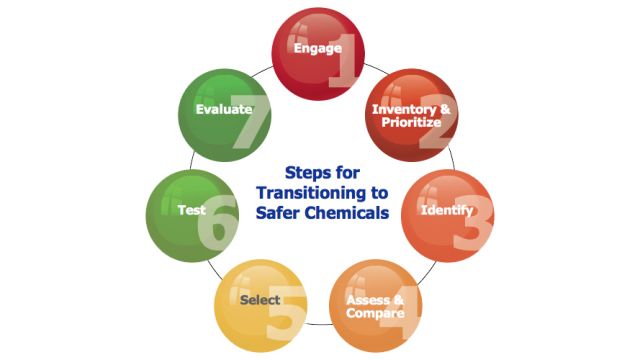OSHA releases hazardous chemicals resources
New resources to better protect workers
By Jesse Lawder
Each year in the United States, tens of thousands of workers are made sick or die from occupational exposures to the thousands of hazardous chemicals that are used in workplaces every day. The U.S. Department of Labor's Occupational Safety and Health Administration launched two new web resources to assist companies with keeping their workers safe.
While many chemicals are suspected of being harmful, OSHA's exposure standards are out-of-date and inadequately protective for the small number of chemicals that are regulated in the workplace. The first resource OSHA has created is a toolkit to identify safer chemicals that can be used in place of more hazardous ones. This toolkit walks employers and workers step-by-step through information, methods, tools and guidance to either eliminate hazardous chemicals or make informed substitution decisions in the workplace by finding a safer chemical, material, product or process. The toolkit is available at www.osha.gov/dsg/safer_chemicals.
"We know that the most efficient and effective way to protect workers from hazardous chemicals is by eliminating or replacing those chemicals with safer alternatives whenever possible," said Dr. David Michaels, assistant secretary of labor for occupational safety and health.
OSHA also created another new web resource: the Annotated Permissible Exposure Limits, or annotated PEL tables, which will enable employers to voluntarily adopt newer, more protective workplace exposure limits. OSHA's PELs set mandatory limits on the amount or concentration of a substance in the air to protect workers against the health effects of certain hazardous chemicals; and OSHA will continue to enforce those mandatory PELs. Since OSHA's adoption of the majority of its PELs more than 40 years ago, new scientific data, industrial experience and developments in technology clearly indicate that in many instances these mandatory limits are not sufficiently protective of workers' health.
"There is no question that many of OSHA's chemical standards are not adequately protective," Michaels said. "I advise employers, who want to ensure that their workplaces are safe, to utilize the occupational exposure limits on these annotated tables, since simply complying with OSHA's antiquated PELs will not guarantee that workers will be safe."
The annotated PEL tables provide a side-by-side comparison of OSHA PELs for general industry to the California Division of Occupational Safety and Health PELs, National Institute for Occupational Safety and Health recommended exposure limits, and American Conference of Governmental Industrial Hygienist threshold limit values. They offer an easily accessible reference source for up-to-date workplace exposure limits, which are available at www.osha.gov/dsg/annotated-pels.
About the Author
Jesse Lawder is the Special Assistant at U.S. Department of Labor.



















